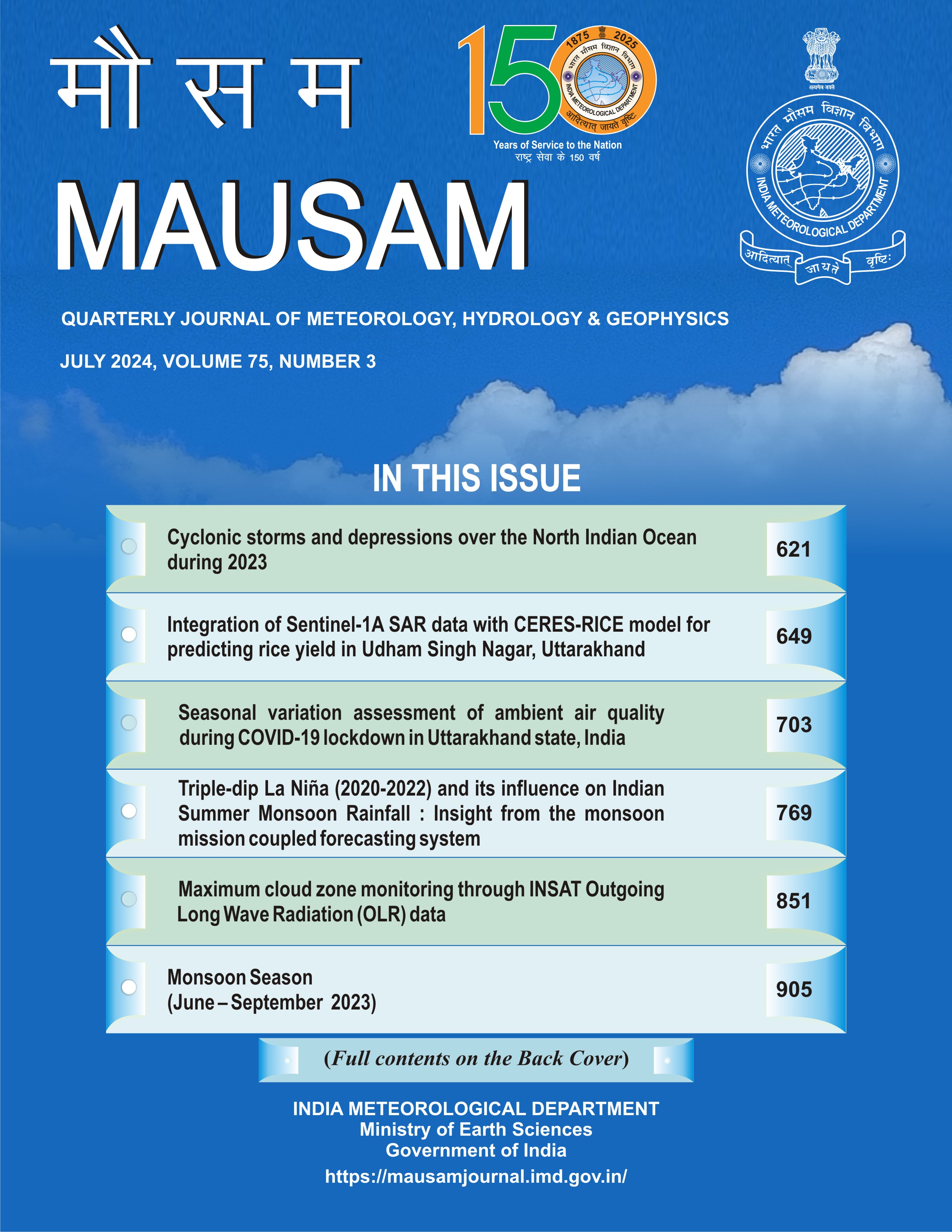The Climatic variability and its impact on maize and wheat yield in Himachal Pradesh
DOI:
https://doi.org/10.54302/mausam.v75i3.5882Abstract
The present study has analyzed variability in climate variables annually and seasonally (kharif and rabi season), viz. rainfall and temperature during from 1985 to 2021 and found its their impact on productivity of maize and wheat crops at different seven locations of Himachal Pradesh. The study found that, except for the maximum temperature in the kharif season, practically all of the seven sites had significant increases in maximum and minimum temperatures annually and seasonally over the study period. Highest positive deviation was found in minimum temperature of Kangra district rabi season i.e., 2.12ºC while lowest was found in kharif season i.e., 0.50 ºC. Pettit’s homogeneity test showed climate change year 1998 and afterward annually minimum temperature was significantly rise. Climate change year showing positive change in rainfall that is showing increasing trend after 1998 at all the locations. Increases in maximum temperature had adverse impact on maize crop yield in the kharif season and a positive impact on wheat yield in the rabi season, whereas rainfall had a positive impact on maize and wheat crop yield.
Downloads
Published
How to Cite
Issue
Section
License
Copyright (c) 2024 MAUSAM

This work is licensed under a Creative Commons Attribution-NonCommercial 4.0 International License.
All articles published by MAUSAM are licensed under the Creative Commons Attribution 4.0 International License. This permits anyone.
Anyone is free:
- To Share - to copy, distribute and transmit the work
- To Remix - to adapt the work.
Under the following conditions:
- Share - copy and redistribute the material in any medium or format
- Adapt - remix, transform, and build upon the material for any purpose, even
commercially.



